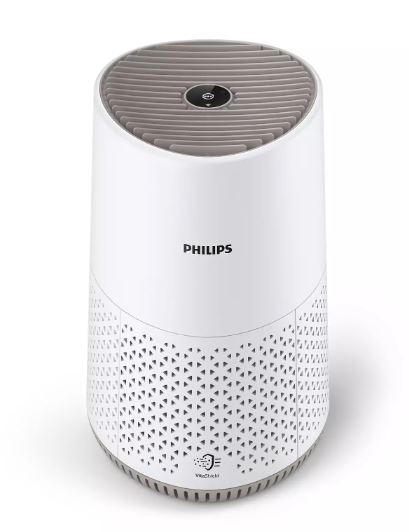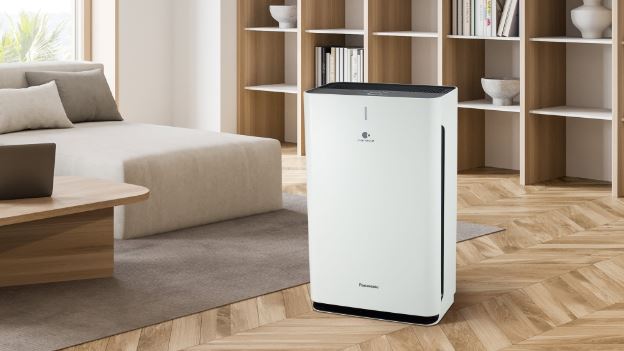In an era of heightened health awareness, the air we breathe in has taken center stage for individuals across the globe. With rising pollution levels and a deeper insight of the influence of indoor air quality on overall health on our health, it's no surprise that the air purifier market is booming.
Air purifiers are appliances that eliminate airborne contaminants in a given area, improving indoor air quality. They are particularly beneficial for those with allergies, asthma, or respiratory concerns as they can significantly lower the presence of allergens, pollutants, and irritants in the air. For those without respiratory concerns can take advantage of air purifiers, as they give added assurance and protect against airborne pathogens.
This comprehensive overview will explore in detail the intriguing world of air purification, examining their advantages, the variety of options on the market, key considerations when choosing a purifier, and how to get the most out of your device. By the end, you should have a solid comprehension of air purifiers and be able to choose wisely about whether investing in one is the best option for you and your family.

Unraveling Indoor Air Contaminants and Their Influence on Health
To grasp the importance of air purification, it's key to comprehending the kinds of pollutants they target and the likely impact of contact with these pollutants.
Indoor air pollutants can be broadly grouped into the following three categories:
- Particulate Contaminants: This includes tiny solid and liquid particles suspended in the air. Examples include dust, smoke, pollen, pet dander, mold spores, and more. Particulate matter can cause respiratory issues and trigger allergic reactions.
- Understanding Volatile Organic Compounds: VOCs are gases released by solids and liquids. Sources of VOCs include cleaning agents, paints, aerosol sprays, pesticides, and similar products. Exposure to VOCs can lead to irritation of the eyes, nose, and throat, as well as headaches and nausea.
- Biological Contaminants: These include microbes such as bacteria, viruses, mold spores, and mildew. They can cause a variety of health problems, from minor allergies to serious infections.
The consequences of exposure on human health can vary significantly. For people with respiratory issues or a vulnerable immune system, exposure to indoor air pollutants can lead to serious health issues. Even those in good health, long-term exposure to certain pollutants can impact respiratory health and overall well-being over time.

Unraveling Air Purification Technology
Air purifiers use a combination of physical and chemical processes to trap and eliminate airborne pollutants. Understanding the fundamental processes employed by purifiers will help you appreciate their effectiveness and the variety of options on the market.
Here are the key processes and technologies used in air purifiers:
- The Power of Mechanical Filtration: This is the most common method used in air purifiers. It involves using filters designed to trap airborne particles as air is drawn into the purifier. The filter composition can differ, each designed to capture specific types of particles. For example:
- Pre-filters: The First Line of Defense: These are usually the first line of defense, trapping bigger contaminants like dust, hair, and similar larger particles.
- HEPA (High-Efficiency Particulate Air) filters: HEPA filters are exceptionally efficient at trapping ultrafine particles, including pollen, dust mites, and some bacteria and viruses. To be labeled a genuine HEPA filter, it must effectively capture particles as small as 0.3 microns, with a minimum efficiency of 99.97%.
- carbon or charcoal filters: These filters are designed to effectively remove odors, VOCs, and gaseous compounds.
- The Power of Ionization: Ionizers use electricity to create an abundance of negative ions, which attach themselves to particles in the air. The charged particles are drawn to nearby surfaces or the purifier itself.
- Ozone: A Powerful Purifier: Some air purifiers use ozone as a powerful cleaning agent. While effective, ozone can also be harmful to human health so these types of purifiers should be used with caution and only in unoccupied spaces.
- Ultraviolet (UV) Light: UV light can be used to destroy biological contaminants like bacteria, viruses, and mold spores. UV light is often used in combination with a filter to eliminate particles, while UV light ensures any remaining biological contaminants are destroyed.
Selecting the Perfect Purifier
With a plethora of options available, selecting the ideal air purification system can be a difficult decision. It's important to consider a range of criteria to ensure you make the right choice for your particular needs and room size.
Here are some essential factors to weigh:
- Room Size: Air purifiers are typically rated for specific room sizes, so it's important to choose a model that can efficiently purify the air in the designated space. Most purifiers will list a maximum room coverage or CADR, which indicates the volume of filtered air delivered per minute.
- Targeted Pollutants: Identify the specific pollutants you want to target. If you suffer from allergies, look for a purifier with a true HEPA filter. For eliminating odors, consider a model with a activated carbon filter. If you're concerned about viral and bacterial threats, a purifier with UV light disinfection might be best.
- Noise Level: Air purifiers can produce a range of noise outputs, so if you plan to use it in a bedroom or quiet space, look for models with a sleep mode or quiet setting.
- Maintaining Performance: Consider the long-term expenses and upkeep of the purifier. HEPA filtration systems may need periodic replacement, depending on use and environmental factors. Factor in the cost of replacement filters when making your choice.
- Smart Innovations: Many purifiers offer intelligent features like air quality sensors, automatic modes, and Wi-Fi connectivity, allowing convenient remote access and monitoring. These features can make your purifier more user-friendly and efficient.
Maximizing the Benefits of Your Air Purifier
Once you've chosen and set up your air purifier, there are several things you can do to ensure it operates at optimal levels and delivers the greatest advantages:
- Optimal Placement: Position your purifier in an unobstructed area, avoiding walls and furniture, to ensure efficient air circulation. Avoid placing it near open windows or doorways as drafts can interfere with its performance.
- Consistent Use: For the best results, it's recommended to run your purifier around the clock. Many models have energy-saving features or smart modes that adapt to the air quality, so you can maintain fresh air without excessive energy costs.
- Filter Maintenance: Regularly follow the manufacturer's filter replacement guidelines. Over time, filters become filled with trapped particles, impacting performance. Set a reminder for filter changes so you don't forget.
- Minimize Indoor Pollutants: Alongside using an air purifier, take steps to minimize indoor air pollutants. This could include regularly vacuuming and dusting, using natural cleaning products, and minimizing the use of strong chemicals or aerosols.